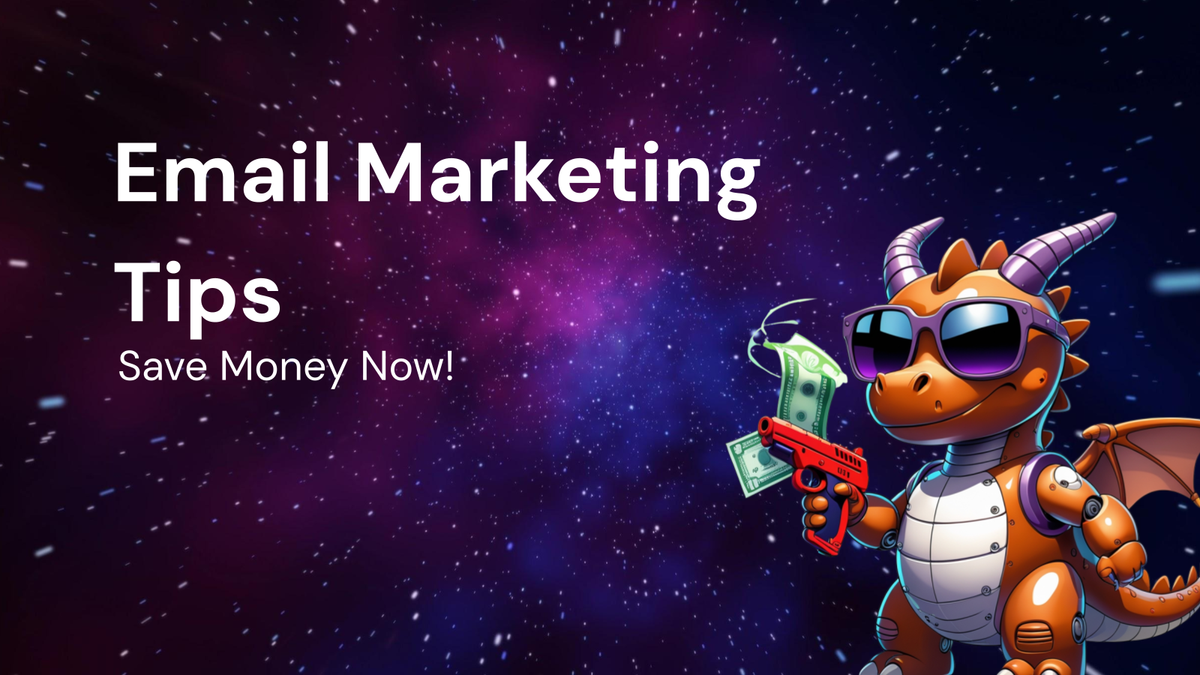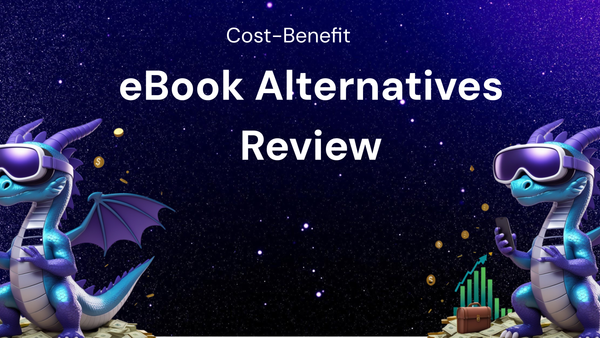How to Save Money with Email Marketing: Top 10 Ways

How to Save Money with Email Marketing: Top 10 Ways
Email marketing, often hailed as a digital marketing workhorse, is far more than just a tool for blasting out promotional messages. When wielded strategically, it can be a powerful engine for driving revenue, building customer loyalty, and, crucially, saving you money. In a world where marketing budgets are constantly scrutinized, optimizing your email strategy for cost-effectiveness is paramount. This blog post delves into the top 10 ways you can leverage email marketing to save money, improve your ROI, and boost your bottom line.
Why Email Marketing Saves Money: A Quick Overview
Before we dive into the specifics, let's understand the underlying reasons why email marketing is a budget-friendly option:
- High ROI: Compared to other marketing channels like paid advertising or direct mail, email marketing consistently delivers a higher return on investment. This means you're getting more bang for your buck.
- Targeted Reach: Email allows you to segment your audience and send highly relevant messages to specific groups. This reduces wasted impressions and ensures your marketing efforts are focused on those most likely to convert.
- Automation: Email marketing platforms offer robust automation features, allowing you to set up triggered campaigns and nurture leads with minimal manual effort. This saves time and resources.
- Measurable Results: Email marketing provides detailed analytics on campaign performance, allowing you to track your progress, identify areas for improvement, and optimize your strategy for better results.
- Scalability: Email marketing can easily scale to accommodate your growing business. Whether you're sending emails to a few hundred subscribers or millions, the underlying principles remain the same.
Now, let's explore the 10 actionable strategies you can implement to save money with email marketing:
1. Segment Your Audience Like a Pro
One of the biggest mistakes marketers make is sending generic emails to their entire subscriber list. This approach is not only ineffective but also costly. Irrelevant emails are more likely to be ignored, marked as spam, or lead to unsubscribes.
How Segmentation Saves Money:
- Increased Engagement: Sending targeted emails based on demographics, purchase history, behavior, or interests results in higher open rates, click-through rates, and conversions.
- Reduced Unsubscribes: Subscribers are less likely to unsubscribe from emails they find relevant and valuable. Maintaining a healthy subscriber list reduces the cost of your email marketing platform, which is often based on the number of subscribers.
- Improved Deliverability: Sending relevant emails improves your sender reputation, leading to better deliverability rates. This ensures your emails reach the inbox, not the spam folder.
- Personalized Offers: Segmentation allows you to create personalized offers and promotions tailored to specific customer segments. This increases the likelihood of a purchase and boosts revenue.
Actionable Tips for Segmentation:
- Collect Data: Gather as much information as possible about your subscribers through signup forms, surveys, and website tracking.
- Define Segments: Identify the key characteristics that differentiate your subscribers and create segments accordingly.
- Use Tags and Lists: Utilize your email marketing platform's tagging and list management features to organize your subscribers.
- Test and Iterate: Continuously test different segmentation strategies to identify what works best for your audience.
Example: An e-commerce store could segment its audience based on past purchases. Customers who have previously purchased running shoes could receive targeted emails about new running shoe models, upcoming races, or training tips. This is more effective than sending a generic email about the entire product catalog.
2. Automate Your Email Marketing Campaigns
Manual email marketing is time-consuming and inefficient. Automation allows you to set up triggered campaigns that run automatically, saving you time and resources.
How Automation Saves Money:
- Reduced Labor Costs: Automating repetitive tasks like sending welcome emails, order confirmations, and abandoned cart reminders frees up your team to focus on more strategic initiatives.
- Improved Efficiency: Automation ensures that emails are sent at the right time to the right people, maximizing their impact.
- Increased Revenue: Automated campaigns like abandoned cart emails can recover lost sales and generate significant revenue.
- Enhanced Customer Experience: Automated emails provide timely and relevant information to customers, improving their overall experience and building loyalty.
Types of Automated Campaigns:
- Welcome Series: A series of emails sent to new subscribers introducing your brand, products, and services.
- Abandoned Cart Emails: Reminders sent to customers who have added items to their cart but haven't completed the purchase.
- Order Confirmation Emails: Emails confirming that an order has been placed and providing shipping information.
- Thank You Emails: Emails expressing gratitude for a purchase or subscription.
- Birthday Emails: Personalized emails sent on a subscriber's birthday with a special offer.
- Re-engagement Emails: Emails sent to inactive subscribers to encourage them to re-engage with your brand.
Example: Setting up an automated welcome series for new subscribers can introduce them to your brand, offer a discount code, and encourage them to make their first purchase. This automated process builds a relationship with new subscribers and increases the likelihood of conversion.
3. Optimize Your Email Design for Mobile
More than half of all emails are opened on mobile devices. If your emails aren't optimized for mobile, you're losing out on a significant portion of your audience.
How Mobile Optimization Saves Money:
- Improved Engagement: Mobile-friendly emails are easier to read and interact with, leading to higher open rates, click-through rates, and conversions.
- Reduced Bounce Rates: Emails that don't render properly on mobile devices are more likely to be deleted or marked as spam, leading to higher bounce rates and a negative impact on your sender reputation.
- Enhanced User Experience: Providing a seamless experience on mobile devices improves customer satisfaction and loyalty.
- Increased Revenue: Optimizing for mobile can lead to more mobile conversions and increased revenue.
Tips for Mobile Optimization:
- Use a Responsive Email Template: Choose a template that automatically adapts to different screen sizes.
- Keep it Simple: Use a clean and uncluttered design with clear calls to action.
- Use Large Fonts: Ensure that your text is easy to read on small screens.
- Optimize Images: Compress images to reduce file size and improve loading speed.
- Test on Different Devices: Test your emails on various mobile devices to ensure they render properly.
Example: Using a single-column layout, large and clear call-to-action buttons, and optimized images are key for mobile-friendly emails. Avoid complex designs that can be difficult to navigate on small screens.
4. A/B Test Everything
A/B testing, also known as split testing, involves testing two versions of an email to see which performs better. This is a crucial step in optimizing your email marketing strategy and saving money.
How A/B Testing Saves Money:
- Improved Performance: A/B testing allows you to identify the elements that resonate most with your audience, leading to higher open rates, click-through rates, and conversions.
- Reduced Waste: By testing different approaches, you can avoid wasting time and resources on strategies that don't work.
- Data-Driven Decisions: A/B testing provides data to support your marketing decisions, ensuring that you're making informed choices.
- Continuous Improvement: A/B testing is an ongoing process that allows you to continuously improve your email marketing performance.
Elements to A/B Test:
- Subject Lines: Test different subject lines to see which ones generate the most opens.
- Sender Name: Experiment with different sender names to see which ones are most trusted by your audience.
- Email Content: Test different headlines, body copy, and calls to action to see which ones drive the most clicks and conversions.
- Images: Test different images to see which ones are most appealing to your audience.
- Layout: Experiment with different email layouts to see which ones are most effective at guiding readers to the desired action.
- Send Time: Test different send times to see which ones result in the highest open and click-through rates.
Example: Testing two different subject lines for a promotional email can reveal which one generates more opens and ultimately leads to more sales. Even a small improvement in open rates can have a significant impact on your overall ROI.
5. Clean Your Email List Regularly
Maintaining a clean and healthy email list is essential for maximizing deliverability and saving money. Over time, email lists can become filled with inactive subscribers, invalid email addresses, and spam traps.
How List Cleaning Saves Money:
- Improved Deliverability: Removing inactive subscribers and invalid email addresses improves your sender reputation, leading to better deliverability rates.
- Reduced Costs: Most email marketing platforms charge based on the number of subscribers. Removing inactive subscribers reduces your monthly bill.
- Accurate Metrics: A clean list provides more accurate data on campaign performance, allowing you to make better informed decisions.
- Reduced Spam Complaints: Removing subscribers who are no longer interested in receiving your emails reduces the likelihood of spam complaints.
How to Clean Your Email List:
- Remove Unsubscribes: Automatically remove subscribers who have unsubscribed from your list.
- Identify Inactive Subscribers: Identify subscribers who haven't opened or clicked on your emails in a certain period of time (e.g., 6 months).
- Send Re-engagement Emails: Send re-engagement emails to inactive subscribers to encourage them to re-engage with your brand.
- Remove Invalid Email Addresses: Use an email verification service to identify and remove invalid email addresses from your list.
- Monitor Bounce Rates: Monitor your bounce rates and investigate any spikes in hard bounces.
Example: Setting up an automated process to identify and remove inactive subscribers can significantly reduce your monthly email marketing costs and improve your deliverability rates.
6. Optimize Your Subject Lines
Your subject line is the first thing your subscribers see in their inbox. A compelling subject line can entice them to open your email, while a weak subject line can lead to your email being ignored or deleted.
How Subject Line Optimization Saves Money:
- Increased Open Rates: A strong subject line increases your open rates, ensuring that more people see your message.
- Improved Engagement: Higher open rates lead to more clicks and conversions, boosting your ROI.
- Reduced Waste: Optimizing your subject lines ensures that your emails are being opened and read, reducing wasted impressions.
Tips for Writing Effective Subject Lines:
- Keep it Short and Sweet: Aim for a subject line that is around 50 characters or less.
- Use Action Words: Use verbs that encourage readers to take action (e.g., "Shop Now," "Learn More," "Get Started").
- Create a Sense of Urgency: Use words or phrases that create a sense of urgency (e.g., "Limited Time Offer," "Ends Today").
- Personalize Your Subject Lines: Use personalization tokens to include the subscriber's name or other relevant information.
- Ask a Question: Asking a question can pique the reader's curiosity and encourage them to open the email.
- A/B Test Your Subject Lines: Test different subject lines to see which ones generate the most opens.
Example: Instead of using a generic subject line like "Our Latest Newsletter," try something more compelling like "Exclusive Offer: Save 20% on Your Next Purchase."
7. Use High-Quality Images and Videos
Visual content can significantly enhance your email marketing campaigns. High-quality images and videos can capture attention, convey your message more effectively, and drive engagement.
How Using Visual Content Saves Money:
- Improved Engagement: Visually appealing emails are more likely to be shared and engaged with, increasing brand awareness and driving traffic to your website.
- Increased Conversions: Images and videos can showcase your products or services in a compelling way, leading to higher conversions.
- Reduced Text: Visual content can often replace large blocks of text, making your emails easier to read and digest.
Tips for Using Visual Content:
- Use High-Quality Images: Use images that are clear, crisp, and relevant to your message.
- Optimize Images for Email: Compress images to reduce file size and improve loading speed.
- Use Videos Strategically: Use videos to showcase your products or services, tell a story, or provide valuable information.
- Use Alt Text: Add alt text to your images to ensure that they are accessible to people with visual impairments.
- A/B Test Visual Content: Test different images and videos to see which ones resonate most with your audience.
Example: Including a short video showcasing a new product can be more effective than a long written description. Visual content can help customers understand the product's features and benefits more quickly.
8. Optimize Your Call to Action (CTA)
Your call to action (CTA) is the button or link that encourages your subscribers to take a specific action, such as visiting your website, making a purchase, or signing up for a webinar. Optimizing your CTA is crucial for driving conversions and maximizing your ROI.
How CTA Optimization Saves Money:
- Increased Click-Through Rates: A clear and compelling CTA encourages more people to click through to your website or landing page.
- Improved Conversions: Higher click-through rates lead to more conversions and increased revenue.
- Reduced Waste: Optimizing your CTAs ensures that your emails are driving the desired action, reducing wasted impressions.
Tips for Optimizing Your CTAs:
- Use Action Words: Use verbs that encourage readers to take action (e.g., "Shop Now," "Learn More," "Get Started").
- Make it Prominent: Make your CTA stand out by using a contrasting color, a larger font size, or a button design.
- Keep it Concise: Use a clear and concise CTA that tells readers exactly what you want them to do.
- Create a Sense of Urgency: Use words or phrases that create a sense of urgency (e.g., "Limited Time Offer," "Ends Today").
- Place it Strategically: Place your CTA in a prominent location, such as above the fold or at the end of your email.
- A/B Test Your CTAs: Test different CTAs to see which ones generate the most clicks and conversions.
Example: Instead of using a generic CTA like "Click Here," try something more specific and compelling like "Shop the Sale Now and Save 20%."
9. Track and Analyze Your Results
Tracking and analyzing your email marketing results is essential for identifying what's working, what's not, and where you can make improvements.
How Tracking and Analysis Saves Money:
- Improved Performance: By tracking your results, you can identify the strategies that are generating the best ROI and focus your efforts on those.
- Reduced Waste: Analyzing your results allows you to identify the areas where you're wasting money and make adjustments to your strategy.
- Data-Driven Decisions: Tracking and analysis provides data to support your marketing decisions, ensuring that you're making informed choices.
- Continuous Improvement: Tracking and analysis is an ongoing process that allows you to continuously improve your email marketing performance.
Key Metrics to Track:
- Open Rate: The percentage of subscribers who opened your email.
- Click-Through Rate (CTR): The percentage of subscribers who clicked on a link in your email.
- Conversion Rate: The percentage of subscribers who completed a desired action, such as making a purchase or signing up for a webinar.
- Bounce Rate: The percentage of emails that could not be delivered.
- Unsubscribe Rate: The percentage of subscribers who unsubscribed from your list.
- Return on Investment (ROI): The amount of revenue generated for every dollar spent on email marketing.
Example: By tracking your open rates, you can identify subject lines that are particularly effective at capturing attention. By tracking your click-through rates, you can identify which CTAs are driving the most engagement.
10. Negotiate with Your Email Marketing Provider
The cost of your email marketing platform can be a significant expense. Don't be afraid to negotiate with your provider to get a better deal.
How Negotiation Saves Money:
- Reduced Monthly Costs: Negotiating a lower monthly rate can save you a significant amount of money over time.
- Access to Additional Features: Negotiating can allow you to access additional features or services that you might not otherwise be able to afford.
- Improved Customer Service: Negotiating can help you build a better relationship with your provider and ensure that you receive excellent customer service.
Tips for Negotiating with Your Email Marketing Provider:
- Do Your Research: Compare pricing and features from different providers.
- Be Prepared to Switch: Let your provider know that you're willing to switch to a competitor if you can't get a better deal.
- Ask for a Discount: Ask for a discount based on your usage, the length of your contract, or any special circumstances.
- Bundle Services: Ask about bundling services to get a better price.
- Negotiate Payment Terms: Negotiate payment terms that are favorable to your business.
Example: If you're a growing business, you may be able to negotiate a lower rate as you add more subscribers to your list. If you're a non-profit organization, you may be able to negotiate a special discount.
Conclusion: Email Marketing – A Smart Investment
By implementing these 10 strategies, you can significantly reduce your email marketing costs, improve your ROI, and maximize the value of your email marketing efforts. Email marketing, when executed strategically, is not just a marketing tool, it's a smart investment that can drive revenue, build customer loyalty, and save you money. So, embrace these strategies and unlock the full potential of email marketing for your business. Remember to constantly test, analyze, and optimize your campaigns to achieve the best possible results and maximize your savings. Good luck!




